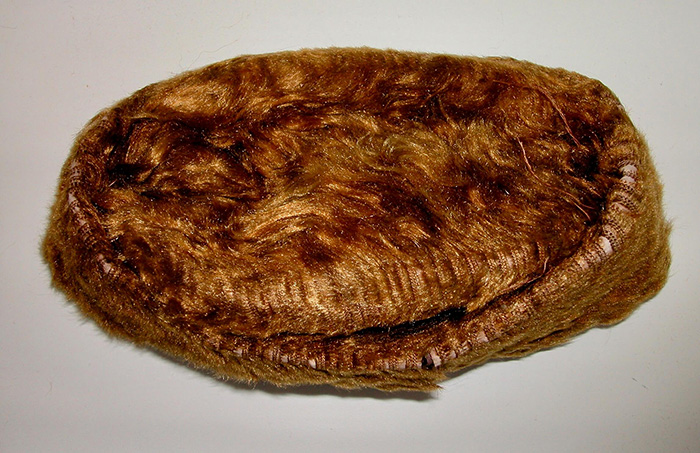Cap a pelliccia (toque), 20th c.
Cap a pelliccia (toque), early 20th century, Sardinia. MC-Monaco, Musée Océanographique, no. 97 5844 (MS inventory 4).
Sea silk fur, made of cleaned fibre beards sewn onto light beige woven fabric (linen?), sewn with reddish-brown cotton thread; lining: twill brown, quilted (probably new), brim height 8.5 cm (turn-up), Ø = 20 cm. The cap shows signs of wear at the rim.
For the inauguration of the new museum in Monaco in 1910, Basso-Arnoux was asked by the director Prof. Jules Richard for objects made of sea silk. This cap was then bought by the museum for 100 lire – together with the other objects (including purses, pendants, a total of 400 lire). The scientists present at the inauguration were delighted about this unique collection: .”..dove destò la più viva ammirazione e l’entusiasmo degli scienziati, per la sottigliezze straordinaria e la delicata morbidezza dei magnifici esemplari tosto acquistati dal Museo stesso, come raccolta veramente unica”, (in English: …where it aroused the liveliest admiration and enthusiasm of scientists, due to the extraordinary subtlety and delicate softness of the magnificent specimens that were soon acquired by the Museum itself as a truly unique collection.)
Angelo Falconi, medical officer of La Maddalena, had supported Basso-Arnoux in his efforts for the production of sea silk: “Il risultato della collaborazione di questi professionisti dotti appassionati e solerti fu un’interessante collezione di artistici lavori in bisso mandata all’inaugurazione del Museo oceanografico di Monaco…” (Zanetti 1964) So the cap probably comes from La Maddalena.

